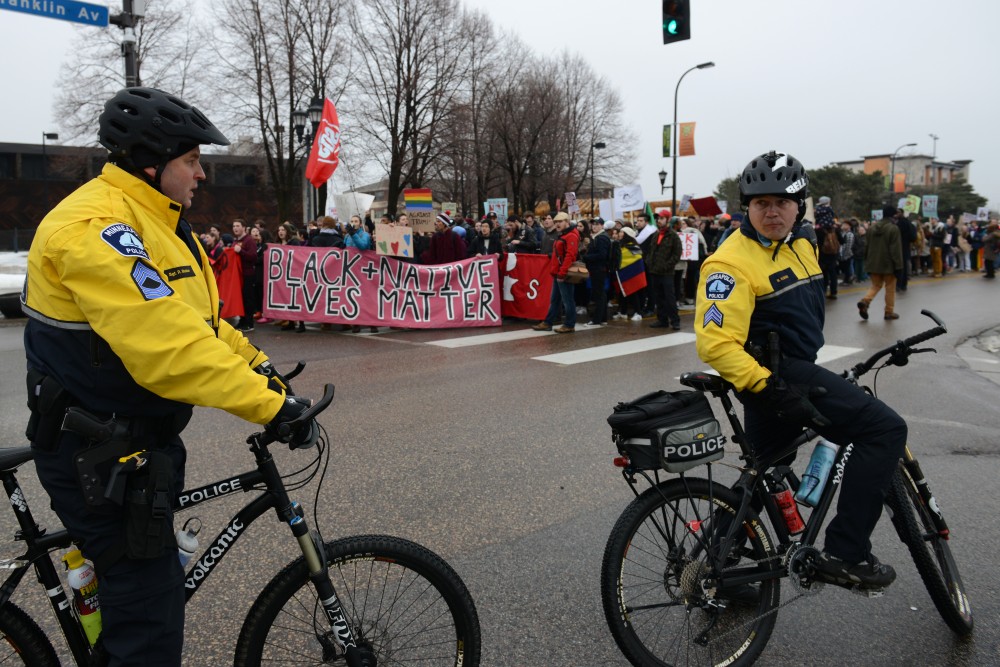With an increase in University-area protests since President Donald Trump’s inauguration, Minneapolis and University police have strengthened their lines of communication.
And since many protests cross over different police jurisdictions, planning between the University of Minnesota Police Department and Minneapolis Police Department is aimed at ensuring safety for all parties, police leaders said.
The relationship between the two departments has always been positive, UMPD Chief Matt Clark said. He said the strong relationship has been especially crucial since the election.
“They’ve always had good relationships with the other police departments and emergency managements in the metro area,” Interim Vice President for University Services Mike Berthelsen said. “But I think this last fall and heading into [2017], that continues to be a higher priority.”
Notable protests since the election include the Jan. 21 Women’s March in St. Paul, the protest of Donald Trump’s inauguration on Jan. 20 and the protest of Trump’s election on Nov. 10. All included University students, and some began on campus and crossed into downtown Minneapolis.
MPD Sergeant Catherine Michal said it takes a lot of planning to facilitate communication between the two departments; even with the Women’s March in St. Paul, the UMPD was involved in planning.
“You bring everybody that could and will be affected by an event,” Michal said. “Then we work together to make sure we all understand what’s going on and what our rules are for the event.”
Michal said while the departments have different jurisdictions, protests and large events often cross borders, so the two departments “work together as a team.”
The MPD also works with the University for big sporting events, and that previous experience helps when it comes to patrolling protests.
“This isn’t just an isolated incident,” Michal said. “We work together on numerous things throughout the year.”
Cross-communication is intended to ensure safety of protesters involved, including those who may be near the protests but aren’t participating, Berthelsen said.
“I think the integration of planning and cooperation between everybody’s department to measure if the campus is safe but also that those that are protesting are safe as well. It’s maintaining an open safe and safe environment,” Berthelsen said.








